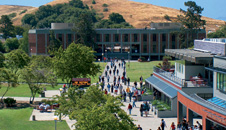Portal:Storage
From Wikibon
| (53 intermediate revisions not shown) | |||
| Line 1: | Line 1: | ||
| - | + | <meta name="description" content="The Wikibon Data Storage Portal contains data storage industry research, articles, expert opinion, case studies, and data storage company profiles." /> | |
| - | < | + | <meta name="title" content="Data Storage Technology Research: Data Storage Portal" /> |
| - | + | The Wikibon Data Storage Portal contains data storage industry research, articles, expert opinion, case studies, and data storage company profiles. | |
| - | |||
| - | |||
| - | |||
| - | + | '''Latest Information Storage Research''' | |
| - | + | * [http://wikibon.org/wiki/v/Storage_Facts%2C_Figures%2C_Best_Practices%2C_and_Estimates Storage Facts, Figures, Best Practices, and Estimates] | |
| - | + | ||
| - | |||
| - | |||
| - | |||
| - | + | {| class="wikitable" style="font-size: 80%; text-align: center; width: 95%;" | |
| + | ![[Image:LinkedIn.gif|100px|link=http://www.linkedin.com/groups?gid=835317&trk=hb_side_g]] | ||
| + | |[[Image:facebook.jpeg|100px|link=http://www.facebook.com/pages/Wikibon/6191646228]] | ||
| + | |[[Image:twitter.jpg|100px|link=http://twitter.com/wikibon]] | ||
| + | |[[Image:blog-2.jpg|100px|link=http://wikibon.org/blog]] | ||
| + | |- | ||
| + | |[http://www.linkedin.com/groups?gid=835317&trk=hb_side_g >>Join our Group] | ||
| + | |[http://www.facebook.com/pages/Wikibon/6191646228 >>Become a Fan] | ||
| + | |[http://twitter.com/wikibon >>Follow @Wikibon] | ||
| + | |[http://wikibon.org/blog >>Read the Blog] | ||
| + | |-} | ||
| - | < | + | __NOTOC__ |
| - | + | {| | |
| - | + | |+ | |
| - | {{ | + | | colspan="2" | <tipoftheday category="wikitips" /> |
| - | + | |+ | |
| - | + | | width="50%" valign="top" | | |
| - | + | ===Featured Case Study=== | |
| - | + | [[Image:Student_union.jpg|250px]] | |
| - | + | ==[[Virtualization Energizes Cal State University]]== | |
| - | + | <p style="color: #666;">John Charles is the CIO of California State University, East Bay (CSUEB) and Rich Avila is Director, Server & Network Operations. In late 2007 they were both looking down the barrel of a gun. The total amount of power being used in the data center was 67KVA. The maximum power from the current plant was 75kVA. PG&E had informed them that no more power could be delivered. They would be out of power in less than six months. A new data center was planned, but would not be available for two years. </p> | |
| - | < | + | [[Virtualization Energizes Cal State University | read more...]] |
| - | + | | valign="top" | | |
| - | + | {{Storage professional alerts 2}} | |
| - | + | |+ | |
| - | + | | valign="top" | | |
| - | + | ===Featured How-To Note=== | |
| - | + | [[Image:Storage_virtualization.jpg|left|250px]] | |
| - | + | | | |
| - | + | ==[[Storage virtualization design and deployment|Storage Virtualization Design and Deployment]]== | |
| + | <p style="color: #666;">A main impediment to storage virtualization is the lack of multiple storage vendor (heterogeneous) support within available virtualization technologies. This inhibits deployment across a data center. The only practical approach is either to implement a single vendor solution across the whole of the data center (practical only for small and some medium size data centers) or to implement virtualization in one or more of the largest storage pools within a data center. | ||
| + | </p> | ||
| + | [[Storage virtualization design and deployment | read more...]] | ||
| + | |}[[Category:Backup and restore]][[Category: Blade computing]][[Category: Business compliance]][[Category: CDP]][[Category: Careers]][[Category: Careers wikitips]][[Category: Clustered storage]][[Category: Compliance and discovery]][[Category: Enterprise mobile wikitips]] | ||
Current revision as of 00:18, 23 February 2010
The Wikibon Data Storage Portal contains data storage industry research, articles, expert opinion, case studies, and data storage company profiles.
Latest Information Storage Research
| >>Join our Group | >>Become a Fan | >>Follow @Wikibon | >>Read the Blog | ||||
WikitipEnergy Efficiency in Food Cold ChainARTICLE NEEDS FORMATING & IMPROVEMENT Every year, billions of pounds of food get thrown away. While a good amount of this waste occurs post-consumer purchase, a prominent segment comes from spoilage during transportation. Increasing the efficiency of the food product supply chain can add several days to the life of a product. Such a change would have hugely positive financial implications for every stakeholder in the supply chain, and make sure our ever-precious resources are not wasted. Worldwide, it is estimated that 40% of all foods are refrigerated at some point, and that 15% of global energy consumption is devoted to refrigeration. With the growing worry over climate change, global warming and the recent sharp increases in energy costs, one clear aim is to reduce the energy used in the cold chain without reducing food safety or quality. If we look at the transport segment of the chain, truck loading appears to present opportunities for increased efficiency. Automated truck loading systems can considerably reduce the cooling losses during the loading and unloading process. Therefore, those systems can play a role in the sustainable and efficient energy management in temperature-controlled transport. Automated truck loading systems are used predominately for transports where loading times play an important role. Standard truck loading or unloading with fork lift trucks takes on average 30 minutes. With automated systems, the loading times can be reduced to just 2 minutes. Avoiding temperature variations during the loading and unloading periods is important, but we must also not forget about potential unforeseen temperature changes occurring in transit. A business whose trucks are equipped with quality temperature reporting technology can get instantly notified when a prominent increase or decrease occurs. Thus, they can address and rectify the issue before completing the transportation process where, for example, a grocery store’s receiver may turn the driver away. If you are interested in how Cooltrax can help you with ensuring energy-efficiently the quality and safety of your perishable loads, get in touch! We offer a 30-day trial and a free cold chain assessment. Cooltrax provides real time information and remote management tools that allow for hands-on supervision of goods in transit. Our reporting is also used as validation for HACCP Plan audits and regulatory inquiry. |
Featured Case StudyVirtualization Energizes Cal State UniversityJohn Charles is the CIO of California State University, East Bay (CSUEB) and Rich Avila is Director, Server & Network Operations. In late 2007 they were both looking down the barrel of a gun. The total amount of power being used in the data center was 67KVA. The maximum power from the current plant was 75kVA. PG&E had informed them that no more power could be delivered. They would be out of power in less than six months. A new data center was planned, but would not be available for two years. |
|
Featured How-To Note |
Storage Virtualization Design and DeploymentA main impediment to storage virtualization is the lack of multiple storage vendor (heterogeneous) support within available virtualization technologies. This inhibits deployment across a data center. The only practical approach is either to implement a single vendor solution across the whole of the data center (practical only for small and some medium size data centers) or to implement virtualization in one or more of the largest storage pools within a data center. | |||



